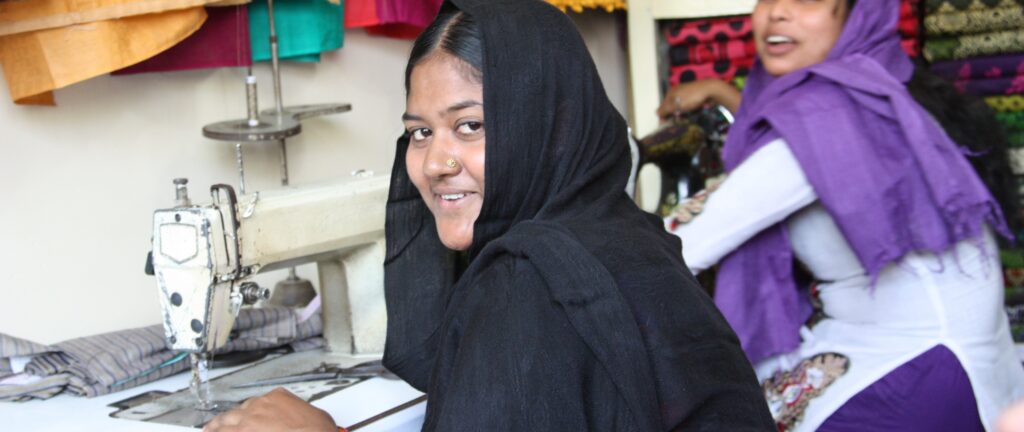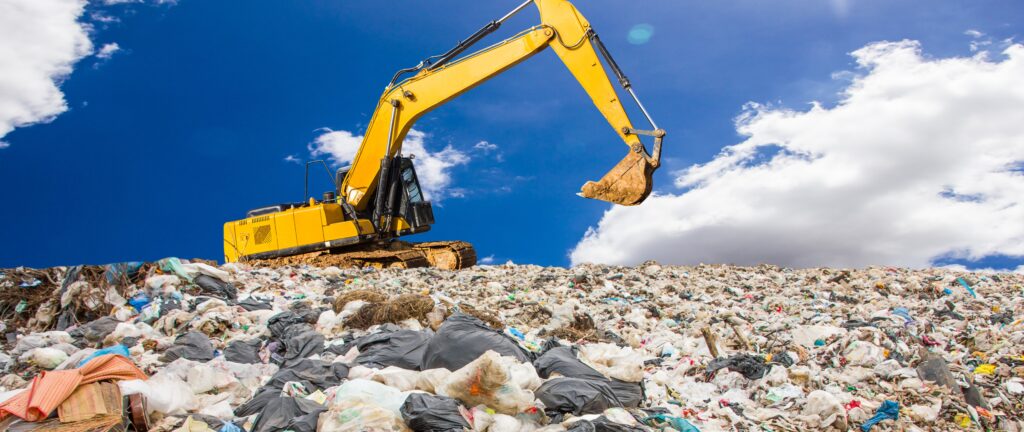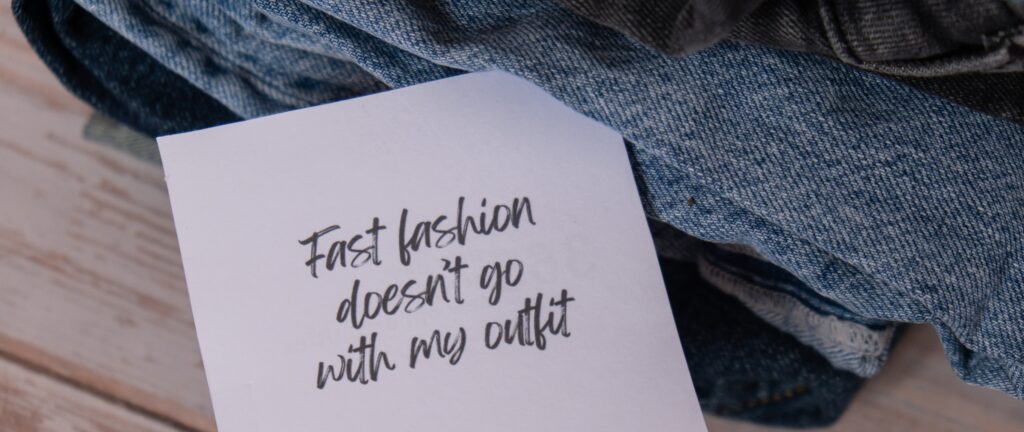Why a fashion revolution may be just the thing
April is Earth Month, and we’ve been all about this year’s official Earth Day theme of Planet vs. Plastics on our blog and social channels. But there’s another important day in April that takes place just two days after Earth Day—Fashion Revolution Day.
2024 marks the tenth anniversary of the first Fashion Revolution Day, so let’s learn more about what this day is about and why it’s so important.

Fashion Revolution Day’s Origin Story
On April 24, 2013, an 8-story industrial building complex in Bangladesh that housed five garment factories and other businesses collapsed, killing at least 1,134 people and injuring over 2,500. Most of the victims were young women factory workers. The Rana Plaza collapse is the deadliest accidental structural failure in modern human history, as well as the deadliest garment-factory disaster ever.
The building was only seven years old, but it had been built on the site of a former pond without any building permits. The heavy equipment from the garment factories was more than the structure could support, leading to giant cracks that were discovered on April 23, 2013. As a result, the other businesses and shops closed, but after the owner of the building asserted it was safe, the garment factories refused to close and ordered their workers to report to work the next day, leading to the enormous tragedy.
Brands who used these garment factories included Benetton, Zara, Walmart, The Children’s Place, Mango, and more. The event sparked widespread protests and awareness which led to the adoption of several laws and agreements protecting factory workers in Bangladesh.
As the Fashion Revolution Day official site says, “In many countries the textile and garment industry is one of the few avenues to financial independence for women. They want good jobs and dignity. What they don’t want is poverty-level pay, excessive working hours and unsafe workplaces…we remember the lives lost and demand that no one should die for fashion.” And so we honor the memory of those lost that day.

Why We Value Fashion Revolution Day
Why does Shepherd’s Dream, a mattress and bedding manufacturer and retailer, pay attention to something like Fashion Revolution Day? While we may not be planning a trip to Paris for the runway shows anytime soon, we do outfit your home.
- As manufacturers and retailers of home goods, we are connected to the global textile industry and supply chain that also services fashion.
- The textile industry is one of the largest polluters in the world, and therefore one of the areas of greatest potential change for the better.
- So-called “fast fashion” affects and connects us all, as the Rana Plaza disaster shows us. Our consumer demand for cheap and easy clothing comes at a great cost. Read on for more on that.

Fast Fashion: From Bangladesh to Chile
What do the Rana Plaza collapse and Chile’s Atacama Desert have in common? The clothes that get made in the factories of Bangladesh are the same ones that end up in Chile’s Atacama Desert, in what is now being called The Great Fashion Garbage Patch, the land-based version of the infamous Great Pacific Garbage Patch. The two locations are bookends to the lifecycle of clothing.
A fantastic National Geographic article looks into this phenomenon and gives some pretty stark background:
Between 2000 and 2014, clothing production doubled and consumers began buying 60 percent more clothes and wearing them for half as long as they once did. Three-fifths of all clothing is estimated to end up in landfills or incinerators within a year of production. […] Most of the facilities are in South Asia or Africa, where the nations receiving those loads cannot handle the amount. A landfill near Accra, Ghana’s capital…is said to be 60 percent clothes and 65 feet high.
Just like Accra, this clothing pile in Chile is quickly growing due to its close proximity to a duty-free port, with as much as 46 million tons arriving annually from Europe, Asia, and the Americas. Locals comb through the world’s rejects for clothes to resell, and those that don’t make the cut are dumped in the desert. Since so many of these clothing items are made from synthetic fabrics and contain plastic components—fake fur coats, sequined dresses, purses, puffer jackets—they sit for a very long time in the high desert’s arid climate.
There’s really no other way to put it—this is the direct effect of inexpensively-made “fast fashion” mass produced in parts of the world with cheap, likely exploitative, labor. This phenomenon, compounded by the global economy, has earned the designation of “an environmental and social emergency” by the United Nations.

What Can We Do?
Oof. That’s pretty bleak. The good news here is that as consumers, we actually have a lot of agency. Here is a list of actions and ideas to get you started:
- Don’t buy fast fashion. Or fast home decor! Cheaply-made goods are almost always made with cheap materials (i.e. plastics), exploitative labor practices, and often with questionable chemicals. Find pieces you’ll love for years and make the investment.
- Look for all-natural fabrics. Cotton, linen, silk, and of course our favorite wool. The jury is still out with regards to bio-based fabrics made with plants like bamboo, hemp, and wood pulps, but they’re likely better than their petroleum-based counterparts.
- Consider the manufacturer. A little bit of research can tell you which brands are caring for their workers. Look for US-made clothing, or items made in other developed countries with fairer labor laws. Clothing from developing countries might carry fair trade certifications, so look for those.
- Invest. As the saying goes, “Buy once, cry once,” meaning it’s better to pay more upfront for quality than to keep replacing items that wear out or quickly lose their trendy buzz. This often requires a shift in priorities and perspective away from dopamine-fueled short-term purchases toward doing research and aiming for timeless quality.
- Repair. This is one of the activities that has fallen off the most with the ubiquity of cheap, readily-available clothing. When we invest in good pieces, we tend to want to keep them around longer too! Channel your grandmother and learn how to darn socks, patch up bald elbows and knees, and fix holes in your wool sweaters. There are lots of social media accounts devoted to just this with really creative and stylish solutions.
- Sell quality items. Keep those clothes in rotation! There are lots of online resellers, and a healthy online market on sites like eBay and Etsy. Or look into local resell and consignment shops, and use the proceeds to get some new duds!
- Donate strategically and responsibly. It should come as no surprise, but large donation companies like Goodwill and Salvation Army are exactly where those clothes in the Atacama Desert come from. Usually donating directly is much more beneficial for everyone—them because they get what they need, and you because you gain the satisfaction of knowing your clothes are going where they’ll be appreciated. Try yard sales, a clothing swap with friends, a local homeless shelter, or a Buy Nothing group. And before donating, ensure that clothes are clean, stain free, and not in need of repairs—these items just gum up the works for everyone and end up in landfills.
- Reuse. What to do with those items that aren’t donatable anymore? Scraps can sometimes be donated to sewing and quilting groups or to schools for projects. And of course, there’s always the rag bin for all your dingiest cleaning tasks.
- Recycle. Clothing recycling is a thing, check Earth911 for a recycler near you, or look online for more options.

Changing the World Through Textiles
For our part, we do our best to participate in circular economy ethics that consider the impacts every step of the way—from the land our fibers come from, to how the fibers are treated and handled, through the production process, to caring for every person along the way until it reaches you, and even beyond to when you’re done with it and it’s time to return it to the soil. These environmental and social problems weren’t created overnight and they won’t disappear that quickly either, but both are connected and require our unflinching attention.
And just like us, there are many US-based companies, mostly smaller scale, who are doing their best to source wonderful natural fabrics, employ workers for fair wages, and provide safe working environments. These goods often cost more, but are almost always guaranteed to last longer, not to mention ease your karmic burden. So keep an eye out and consider supporting these companies doing the good work.
Thank you for supporting our efforts! We couldn’t do it without you. We hope you’ve found some inspiration today to continue your journey toward more sustainable and just goods. Be sure to give us a follow on Instagram for more on the world of textiles and wool, and until next time, sweet dreams!

